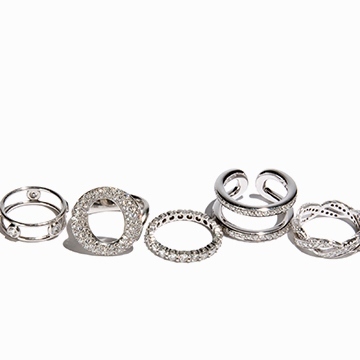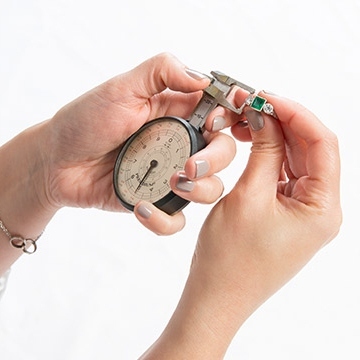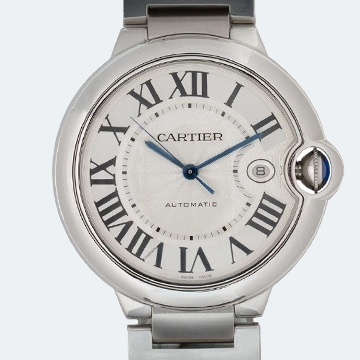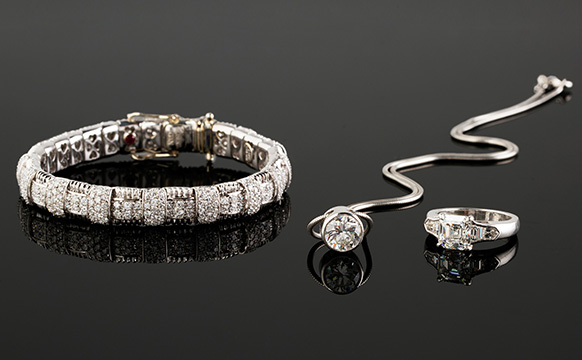
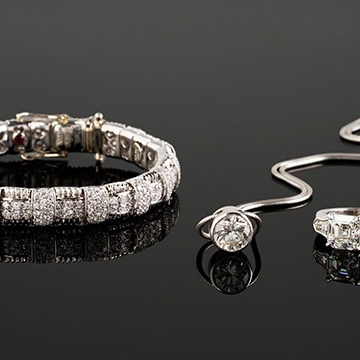
Diamond Grading & Authentication: Our Expert’s Guide to the Four Cs
Diamond grading is an art and a science. It requires detailed technical knowledge, mastery of gem-evaluating equipment, and a nuanced understanding of the ever-evolving trends in economic markets and popular fine jewelry styles. At The RealReal, we have just such an expert in our Team Lead for Fine Jewelry & Watches, Adriana Krakowski. Here, she shares her in-depth process for diamond grading and authentication at The RealReal.
Diamond Authentication
“I maintain a very meticulous process for diamond grading so that all important elements are always taken into consideration no matter what size or quality the diamond might be,” says Krakowski. “My process is the same for every diamond.”
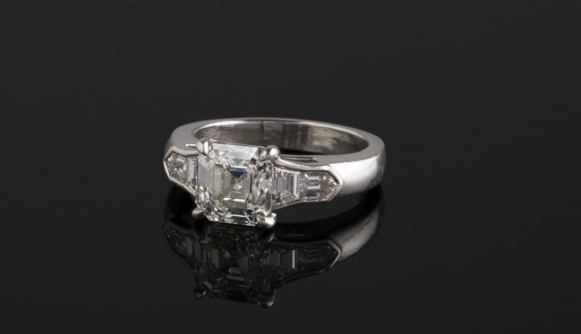
The four steps in Krakowski’s diamond authentication process:
Observation
“Each piece is inspected with a 10x loupe under a diamond grading lamp,” explains Krakowski. “I observe the diamond from all angles, which is necessary for color grading, clarity grading, and assessing the condition of the stone as well as proportion and symmetry.”
Measurement
“I use a leverage gauge to take measurements of the average girdle diameter and depth of the diamond so that the carat weight can be calculated. There are various formulas and adjustment factors used for the different cutting styles and proportions.”
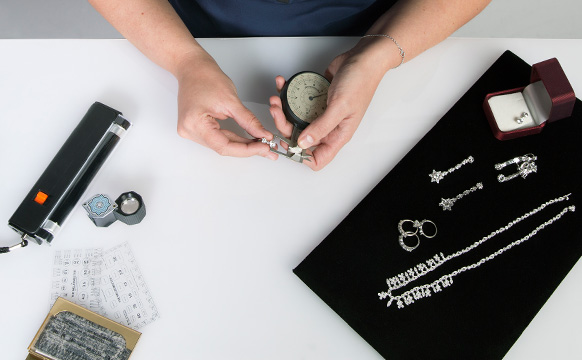
Analysis
“Next I analyze all of the grading factors together — some may contribute to a strong value for the diamond, and some elements might diminish value,” says Krakowski. In the end, the diamond’s value will be determined by this combination of factors.
Pricing
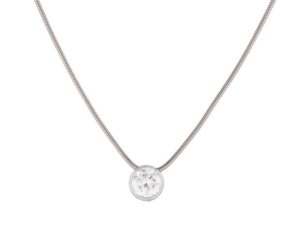
“A document called the Rapaport Diamond Report assists most industry professionals in pricing diamonds,” notes Krakowski. “It is based on a pricing matrix that fluctuates based on the carat size, color and clarity of the diamond. For each size matrix, there are 110 different per carat values that a diamond can have. These values are then interpreted based on the complete set of grading characteristics and current market demand.”
Diamond Grading
When it comes to diamond grading, Krakowski emphasizes the importance of the industry standards established by the Gemological Institute of America. “GIA invented the diamond grading system. The only trusted standards are those outlined by the GIA,” she says.
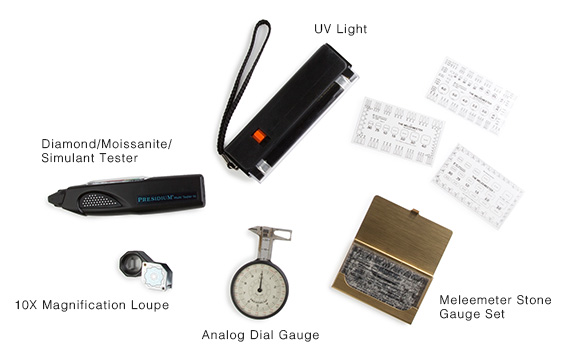
Krakowski’s guide to the four Cs:
Cut
“I judge a diamond’s cut by looking at the proportion, symmetry and polish as they relate to GIA grading standards of cutting. The GIA rating scale for cut goes from excellent to very good, good, fair and poor. The cut is what makes a diamond sparkle!”
Color
“Color is judged observing the absence of color in the diamond. A chemically pure and structurally perfect diamond has no hue. GIA’s D-to-Z diamond color-grading system measures the degree of colorlessness by comparing a stone under controlled lighting and precise viewing conditions to masterstones of established color value,” notes Krakowski. “Gemologists at The RealReal use this same practice to grade color.”
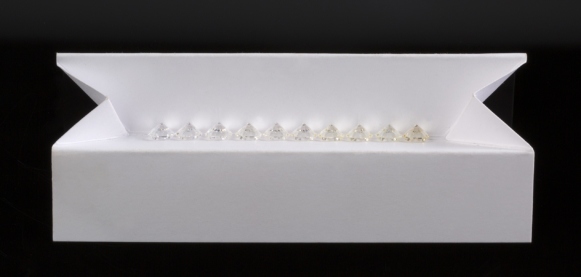 Masterstones used to determine a diamond’s colorlessness.
Masterstones used to determine a diamond’s colorlessness.
Clarity
“Judging diamond clarity involves observing the presence of internal characteristics called inclusions. The fewer visible clarity characteristics a diamond has, the higher the clarity grade will be.”
Carat
“Determining carat weight is done by a series of precise measurements and calculations. If the diamond is not mounted in a piece of jewelry, I weigh it on a carat scale.”
Diamond Valuation
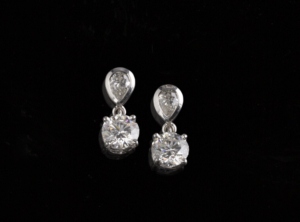 “A diamond’s value is based on its quality and market demand, which is a combination of rarity and desirability,” says Krakowski. “The main factors that contribute to the quality are the 4 Cs — carat size, cut, color and clarity — but there are many other factors that I look at when grading.” While most of the important factors of a diamond’s quality and authenticity are documented in a stone’s certificate from the GIA, there is a key factor that must be determined at the time of inspection: market demand. “Diamond valuation involves understanding what the market is looking for and what is too available to support any kind of premium. Style plays a big part in the value as well. For example, in today’s market a marquise cut diamond is not as popular as a round brilliant cut diamond so the marquise cut diamond would not get as much strength in its value because it will be a harder stone to sell.”
“A diamond’s value is based on its quality and market demand, which is a combination of rarity and desirability,” says Krakowski. “The main factors that contribute to the quality are the 4 Cs — carat size, cut, color and clarity — but there are many other factors that I look at when grading.” While most of the important factors of a diamond’s quality and authenticity are documented in a stone’s certificate from the GIA, there is a key factor that must be determined at the time of inspection: market demand. “Diamond valuation involves understanding what the market is looking for and what is too available to support any kind of premium. Style plays a big part in the value as well. For example, in today’s market a marquise cut diamond is not as popular as a round brilliant cut diamond so the marquise cut diamond would not get as much strength in its value because it will be a harder stone to sell.”
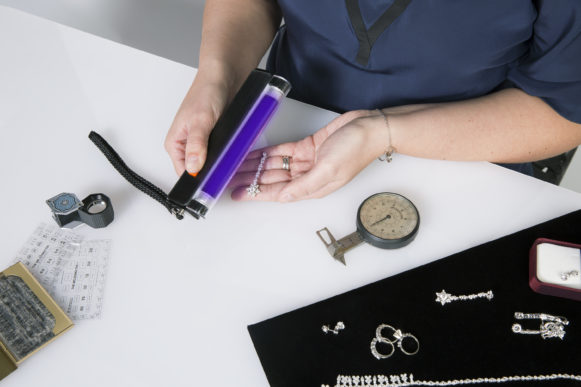
The 5 factors, according to Krakowski, that give a piece value include :
1. The intrinsic or commodity value of the metals and stones.
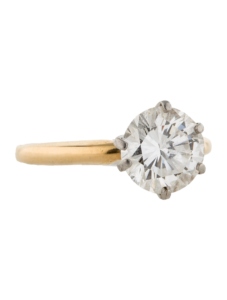
2. The quality of craftsmanship and materials.
3. The market demand for the specific type, brand, style or period of the item.
4. The availability or rarity of the item within the secondary market.
5. The cost that an industry professional would incur to manufacture the item.
Inspired by diamonds? Shop our curated selection authenticated by Krakowski and her team here.
All items are pre-owned and consigned to The RealReal. Trademarks are owned by their respective brand owners. No brand owner endorses or sponsors this ad or has any association and/or affiliation with The RealReal.
Please note: Brand standards, logos and other identifying features may have changed since the time of publication.


